For preschooler bounce fitness success, prioritize safety with proper supervision and age-appropriate equipment. Start with brief 5-minute sessions, gradually increasing time as confidence builds. Create structured games like Bounce and Freeze that feel like play while building skills. Incorporate counting and simple math concepts during activities. Involve the whole family to model healthy habits. Celebrate small achievements to boost confidence. Establish a consistent schedule that makes bouncing a joyful routine. These foundational approaches will transform your little one’s bouncing experience.
Creating a Safe Bounce Environment for Little Ones
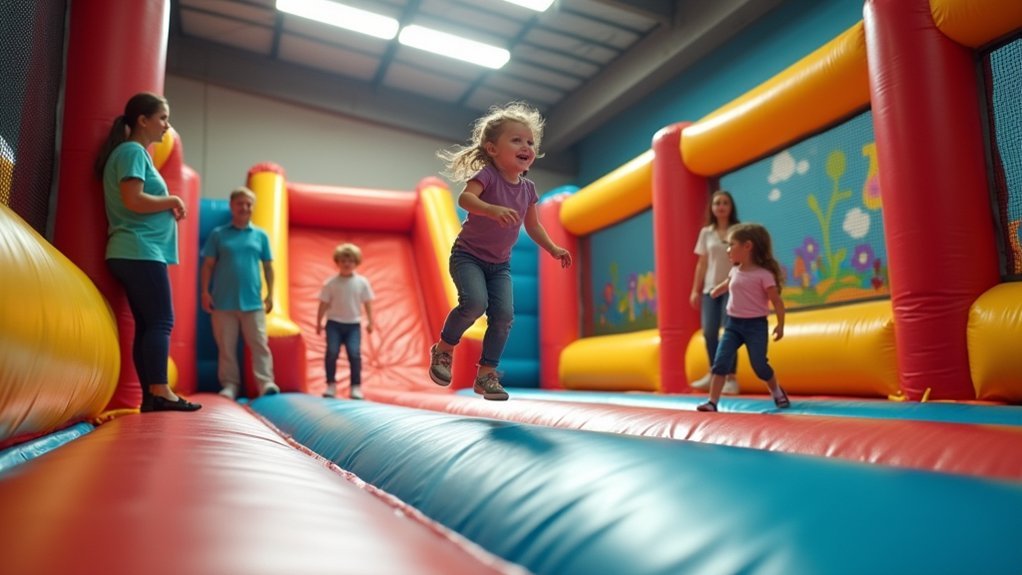
When introducing your preschooler to bounce fitness, safety must come first. Thoroughly inspect the bounce area for hazards like sharp objects or obstacles that could cause injuries during active play.
Choose age-appropriate bounce equipment specifically designed for preschoolers, ensuring it’s well-maintained with no worn parts or tears. Mini trampolines and inflatable bounce houses work well for this age group.
Always provide close supervision while children are bouncing. You’ll need to maintain visual contact and stay within arm’s reach to prevent falls or improper use of equipment.
Establish clear rules, including limiting the number of bouncers at one time to prevent collisions.
Create soft landing zones with padded mats or grass surfaces around all bounce equipment to cushion potential falls.
Age-Appropriate Rebounding Activities for Preschoolers
Finding the perfect rebounding activities for preschoolers helps make fitness both effective and enjoyable. Introduce mini trampolines for gentle bouncing sessions of 10-15 minutes to enhance balance and coordination while keeping your little one engaged.
| Activity | Benefit |
|---|---|
| Bounce and Freeze | Develops motor skills and listening ability |
| Bouncing with a Ball | Strengthens lower body muscles |
| Mini Obstacle Course | Enhances agility and confidence |
| Follow-the-Leader Bouncing | Improves coordination and focus |
You’ll notice significant improvements in your child’s physical abilities through these structured rebounding activities. Create an obstacle course with various rebounding stations to encourage different movements. Remember, these fitness exercises should feel like play while secretly building essential motor skills and cardiovascular health that benefit your preschooler’s development.
Supervised Fun: Balancing Freedom With Safety
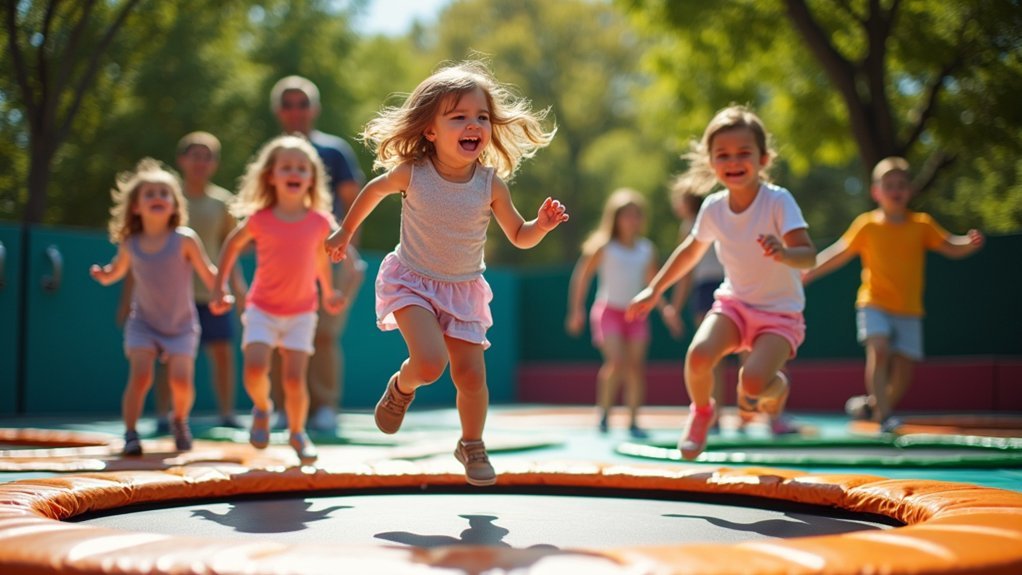
Creating a safe environment for preschoolers during bounce fitness activities requires careful balance between supervision and allowing freedom for exploration. Always maintain active supervision while children bounce, positioning yourself where you can quickly respond to any situation.
Establish clear safety rules before starting, using simple language that preschoolers understand. You’ll want to engage directly in activities, demonstrating proper techniques while making safety measures seem fun rather than restrictive.
Transform supervised sessions into exciting adventures by incorporating structured games that naturally enforce boundaries. Check your bounce area regularly for potential hazards, ensuring all equipment remains in good condition.
Remember that when children feel secure in a well-supervised environment, they’re more likely to fully participate and enjoy the physical benefits bounce activities provide.
Starting Slow: Building Confidence on the Trampoline
The journey to trampoline proficiency begins with gentle introduction rather than overwhelming enthusiasm. Start with brief 5-minute sessions, gradually extending time as your child’s confidence grows.
Make sure they wear grip socks and use a properly set up trampoline with safety enclosures.
Safety first, fun second. Always equip your little jumper with grip socks and ensure your trampoline has proper enclosures before bouncing begins.
Transform practice into play by creating simple games—count jumps together, bounce to favorite songs, or create silly jumping challenges.
Focus on fundamental skills like straight jumps and soft landings, which naturally develop coordination and body control.
Celebrate every achievement, no matter how small. A successful landing or maintaining balance deserves recognition.
These positive affirmations build your preschooler’s self-esteem and create an association between trampoline time and accomplishment, making them enthusiastic to continue developing their bounce skills.
Making Bounce Time Educational Through Play
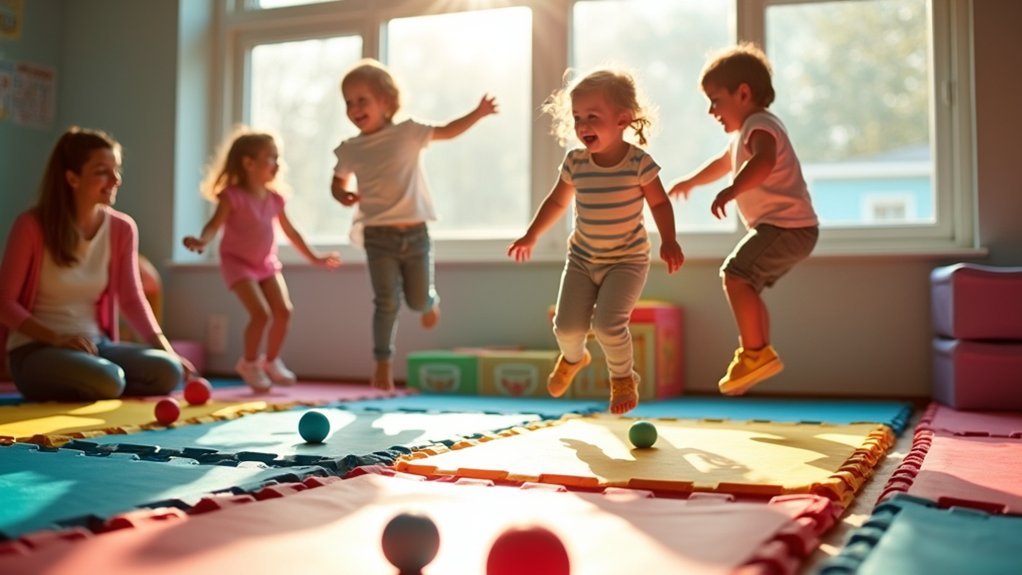
You’ll be amazed at how quickly your preschooler picks up counting while bouncing, turning an active playtime into a math lesson as they track their jumps.
Balance activities on the trampoline help develop your child’s coordination while building their confidence as they master new skills.
Turn these physical challenges into games with songs and rhymes to keep your little one engaged while they’re learning through movement.
Bouncing Learns Numbers
Bouncing activities provide the perfect opportunity to introduce numerical concepts to your preschooler while they’re having fun. Ask your child to count their jumps aloud during physical activity, strengthening both numerical skills and coordination simultaneously.
Place colorful number mats on the floor and challenge preschoolers to bounce to specific numbers. Call out “Bounce to number 5!” and watch their excitement as they engage with numbers through movement.
Create simple games where they solve “How many is 2+1?” before bouncing that many times.
Don’t forget to incorporate counting songs during bounce sessions. Rhythmic tunes like “Five Little Monkeys Jumping on the Bed” make learning interactive and memorable.
These playful strategies transform ordinary exercise into educational experiences that will have your preschooler literally jumping for mathematical success.
Balance Builds Confidence
Balance stands at the core of every child’s physical development journey, especially during energetic bounce sessions. When you incorporate simple balance challenges into your preschooler’s bounce routine, you’re helping them develop essential motor skills that extend beyond physical activity.
Try encouraging your child to stand on one foot between bounces or walk along a painted line after trampoline time. As they master these skills, you’ll notice their confidence growing with each successful attempt. This newfound self-assurance naturally translates to other activities.
Make balance practice playful by counting how long they can maintain position or singing songs that prompt different balance poses. These moments create opportunities for your child to experience achievement, building their self-esteem while preparing them for more complex physical challenges ahead.
Their proud smiles will tell you everything.
Developing Motor Skills Through Guided Rebounding
While many parents focus on traditional playground activities, guided rebounding offers a powerful way to enhance your preschooler’s motor development.
Just 15-30 minutes of bouncing can greatly improve cardiovascular fitness while strengthening multiple muscle groups through active play.
Small sessions of bouncing deliver big cardiovascular benefits while building muscles in a playful, engaging way.
- Coordinate with rhythm – Incorporate songs during rebounding sessions to improve your child’s timing and body awareness.
- Build gross motor skills – Regular mini-trampoline use helps preschoolers navigate their environment more confidently.
- Boost balance and agility – Dynamic bouncing movements challenge and develop your child’s stability.
- Meet daily requirements – Rebounding contributes to the recommended 3 hours of varied physical activity preschoolers need daily.
You’ll notice improved coordination and strength as your child enjoys this engaging form of exercise that feels more like play than workout.
Establishing Healthy Exercise Routines With Bounce Fitness
Transforming bounce fitness from occasional play to consistent routine creates lasting benefits for your preschooler’s development. Aim for about 3 hours of physically active time daily, incorporating bouncy games into regular activities to make exercise fun.
Create bouncy obstacle courses or trampoline sessions that enhance coordination while keeping kids excited about movement. Replace excessive screen time (limit to 1 hour daily) with active bounce alternatives.
Involve the whole family in bounce sessions—children adopt healthy habits more readily when they see parents enjoying physical activity too.
Celebrate your preschooler’s small achievements, whether it’s mastering a new bouncing skill or completing a full activity session. These positive reinforcements build confidence and establish bounce fitness as an enjoyable, lifelong practice.
Frequently Asked Questions
What Are Three Strategies You Would Use to Encourage Children’s Active Participation?
You’ll boost children’s active participation by planning fun obstacle courses and games, limiting screen time to under 1 hour daily, and joining family fitness activities like walks that model healthy habits they’ll emulate.
What Are the 5 Tips of Fitness Success?
The 5 tips for fitness success are: engage in 3 hours of daily activity, make fitness fun, limit screen time to 1 hour daily, model active behavior yourself, and celebrate small achievements along the way.
Is Rebounding Good for Children?
Yes, rebounding is excellent for your children. It improves balance, coordination, and motor skills while enhancing cardiovascular health. It’s also low-impact, strengthens muscles and bones, and encourages social interaction during play.
What Is the Physical Activity Guideline for Preschool Age Children?
Preschoolers should get at least 3 hours of varied physical activity daily. You’ll want to limit their screen time to 1 hour per day while encouraging activities that include jumping, hopping and tumbling for proper development.
In Summary
With these bounce fitness strategies, you’ll transform your preschooler’s trampoline time into a developmental powerhouse. You’re not just watching them have fun—you’re building their confidence, motor skills, and healthy habits. Remember to keep safety first, progress at their pace, and make learning playful. By incorporating these tips, you’ve created more than exercise—you’ve established a foundation for lifelong fitness that your little one truly enjoys.
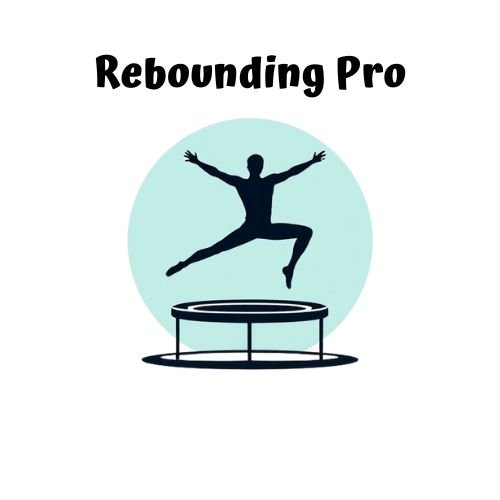
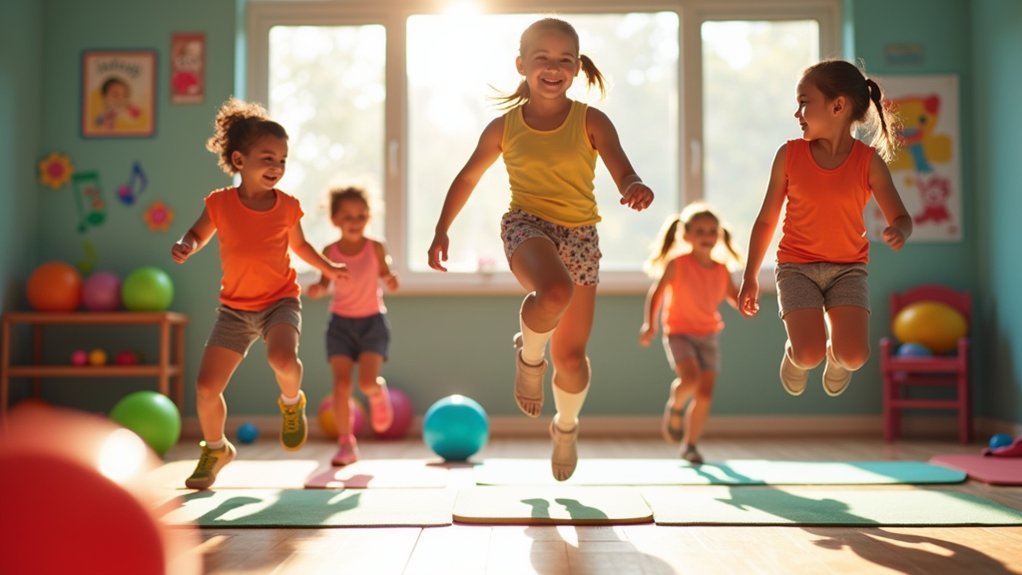


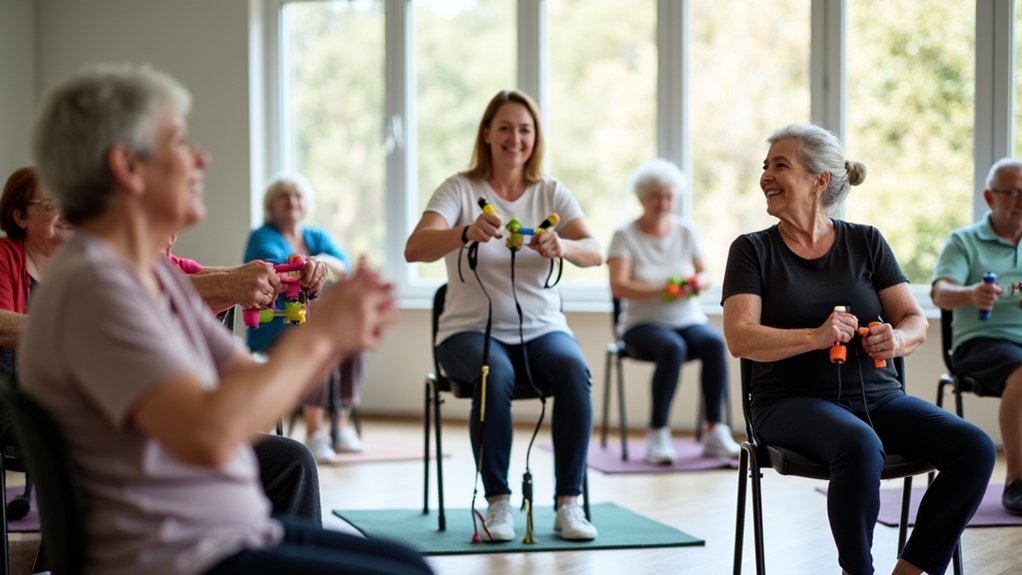
Leave a Reply